Over the course of WoW’s nearly 10-year history, raiding has probably undergone more iteration and change than any other game system. To put the upcoming Warlords of Draenor raid changes into proper context, this three-part blog series will attempt to retrace the twists and turns of our raid design philosophy from Molten Core through Siege of Orgrimmar. Veterans will hopefully enjoy the trip down memory lane, and we hope those who discovered raiding later on will gain some insight into how things used to be . . . and why they changed.
Classic World of Warcraft (2004-2006)
At the launch of WoW, there were two formal raid zones: Onyxia’s Lair and the 10-boss Molten Core, the latter of which was originally only accessible by traversing Blackrock Depths. During the first few months after the game’s release, instances in general didn’t have any cap on the number of players that could enter at once, as long they were all in the same group (15-player Stratholme and Scholomance “raids” were not uncommon back then). With the upper limit on group size set at 40, 40-player raiding became the de facto standard for the early raid zones, since bringing more players generally made things easier (with a few exceptions).
When the world of Azeroth was brand new, the overall pace of leveling significantly slower than it is today, such that the primary occupation for a majority of players was simply striving to reach max level. And even for the most cutting-edge players, many of whom were familiar with the leveling experience from the beta, it took two months from release for the first group to defeat Lucifron, the first boss in Molten Core.
Therefore, applying the tried and true principles of Internet forum logic, Lucifron was clearly more challenging than Garrosh—or any boss in the past 5 years for that matter. OK, maybe not. The delay was due not to the bosses’ difficulty, but rather the fact that it took even the most dedicated groups with extensive raiding experience from past MMOs that long to assemble a sufficiently large group of level-60 players who had obtained the appropriate dungeon and endgame quest gear. In many ways, that was the most challenging aspect of classic WoW raiding: the logistics of assembling and maintaining a sufficient roster with sufficient gear.
Over the year and a half to follow, Blackwing Lair, Temple of Ahn’Qiraj, and the original version of Naxxramas were introduced, providing an increasing level of challenge for groups that had already completed Molten Core. These raid zones all were tuned around both a full 40-player group and the expectation that players possessed a significant amount of raid gear, which meant that by definition fewer and fewer people were able to participate in each successive tier of content. New players joining the game during the summer of 2006, at the height of Naxxramas progression, had virtually no hope of ever seeing Kel’Thuzad. At best, they might level quickly and get enough dungeon gear to join a guild that was still doing Molten Core.
In parallel, we introduced two 20-player raid zones, Zul’Gurub and Ruins of Ahn’Qiraj, allowing smaller groups to experience epic content on a scale beyond that of dungeons. These 20-player raids placed more individual responsibility on the shoulders of raid members, due both to the smaller group size and the comparative difficulty of the encounters. Encounters like Jin’do, Hakkar (now retired), and Ossirian were proof that there was plenty of room for involved and challenging encounter mechanics in smaller raids.
The Burning Crusade (2007-2008)
Moving into The Burning Crusade, we made the first of our raid structure adjustments, reducing the maximum size of the largest and most challenging raids from 40 to 25 players. This change had two objectives:
Along with lowering the maximum raid size, The Burning Crusade also introduced true 10-player raiding for the first time (you could argue that Upper Blackrock Spire was first, but that was more of a 10-player dungeon given its structure). The individual encounters in Karazhan were quite challenging, especially in the zone’s first iteration, but this new size brought raiding within reach of an all-new group of players: “friends and family” groups. A tremendous number of players came to World of Warcraft with a small group of coworkers, classmates, family, and online friends from other games. For the first time, groups like these could raid as self-sufficient entities, perhaps needing to find only a couple of additional players from their realm. However, those groups still could not experience much of the game’s signature content: Illidan taunted everyone who watched The Burning Crusade trailer with his infamous line, “You are not prepared,” but unless you had 24 companions with you, you could never see the expansion’s major villain firsthand within Black Temple.
At The Burning Crusade’s release, the 25-player raid content was mistuned: In many ways, encounters like the original Gruul and Magtheridon picked up where classic’s version of Naxxramas had left off, providing stern challenges for the best guilds in the world, but presenting a brick wall to the rest of the raiding population. This was corrected by Patch 2.1 a few months later, which also established the precedent that each expansion’s raids would be self-contained and would provide an entry point for players who were brand new to raiding.
Patch 2.4 introduced the 25-player Sunwell raid, which continued in the classic progression model by serving as the pinnacle of the raiding pyramid, accessible only to the very few players who had mastered Black Temple and Mount Hyjal. More significant as a sign of things to come, however, was the introduction of the Isle of Quel’danas Badge of Justice vendor, as well as Magister’s Terrace. Badges of Justice were not new, but this was the first time that questing and dungeons allowed access to items that were truly comparable in power, or superior to, many of the raid items from the first two tiers of 25-player The Burning Crusade raiding. Along with the removal of attunements, this meant that for the first time, players could entirely bypass those tiers if they wanted to gear up and prepare for zones like Zul’Aman or Black Temple.
Wrath of the Lich King (2008-2010)
Every patch of Wrath of the Lich King brought with it a major innovation and fundamental shift to the raiding landscape. It was primarily over the course of this expansion that raiding was molded into the form that will be recognizable to most WoW players today.
Patch 3.0: Naxxramas, Obsidian Sanctum, and Eye of Eternity
From the outset, Wrath’s major change was offering parallel 10- and 25-player versions of the same raid zones. This addressed the issue of much of the game’s most epic lore and content being out of reach for those without 25-player groups, and it also allowed us to design content to serve multiple audiences. The 25-player version was tuned to be more challenging, and offered separate loot tables with more powerful rewards. Learning lessons from early The Burning Crusade tuning, Naxxramas, once the playground of the elite during classic WoW, was reintroduced as a highly accessible entry point to raiding. From friends-and-family groups to established raiding guilds to the nascent pickup-group scene, Wrath opened raiding up to a far wider audience than ever before.
But even 25-player Naxxramas was fairly lenient for guilds coming straight from Sunwell. With Ulduar development well underway, the main feature to occupy top guilds’ attention in the interim was Sartharion’s variable difficulty level within The Obsidian Sanctum. The black dragon was accompanied by three drakes, who would join in the fight and empower Sartharion if left alive. Defeating Sartharion with two drakes active awarded loot from a different, higher level table. Defeating him with all three awarded a special mount and title. The core philosophy here was simple: All players get to see the Obsidian Sanctum and experience the fight, but players looking for an extra challenge can take on a tougher version of the same encounter and be rewarded accordingly. As with many of our experiments, this one’s success laid the groundwork for what was to come.
Patch 3.1: Ulduar
Ulduar took the Sartharion model and expanded upon it, introducing a full tier where 9 of the 13 encounters had an optional “hard mode” that awarded superior loot if completed. This established the new norm for how raid content would be introduced: While average guilds slowly and methodically learn each encounter in a zone, top guilds quickly clear through the regular versions of the encounters and then spend weeks or months progressing through the harder-difficulty versions.
Patch 3.2: Trial of the Crusader
Once it became clear that we were satisfied with the multiple-difficulty paradigm, we decided to formalize things. While many players had (and continue to hold) a fondness for organic hard modes that could be enabled by specified actions within an encounter, they were inconsistent and often lacking clarity. Some of them (The Assembly of Iron, Freya) were elegant and intuitive, but others were frustrating or created traps for players (“Whoops, you killed Hodir in 121 seconds, try again next week!” or “Stop DPS, don’t kill XT’s heart!”). Others still were too obscure and unlikely to be discovered without reading a guide (General Vezax). We already had an established method for handling this problem in another kind of content: Since The Burning Crusade, we’d had two versions of our dungeons, each with different difficulty levels, rewards, and often varying mechanics.
Thus, in patch 3.2, we released four versions of Trial of the Crusader (10- and 25-player, each with a Normal and Heroic difficulty). While in many ways 10-player and 25-player Naxxramas had been equally easy, with Ulduar and Trial of the Crusader there was a more marked division in tuning between the two modes. When in doubt, we never hesitated to err on the side of making the 10-player version easier, due to the difference in rewards. Functionally, in terms of both tuning and itemization, we had three distinct levels of raid difficulty: normal (10-player Normal), hard (10-player Heroic/25-player Normal), and very hard (25-player Heroic).
Having multiple difficulties was hardly a new concept in gaming, but when applied to raiding, it allowed the same content to provide a compelling experience for an even wider range of players. Ultimately, organized raiding feels most satisfying when players encounter a challenge—they strategize, adapt, and practice their execution, and then are able to overcome that challenge. Then in the following weeks, they can come back and demonstrate mastery over something that once seemed difficult. Players’ appetite for failure varies tremendously by play style and temperament, but regardless, few will consider an encounter that they defeat in a single attempt with no prior preparation to be particularly satisfying, and most will be frustrated by an encounter that feels hopeless even after many attempts. Our goal is to hit that tuning sweet spot for as many players as possible, and having multiple difficulties is the mechanism to make that happen.
It may be of interest to note that at that time, we very nearly did not include a 10-player Heroic difficulty at all. There was limited evidence to support that many players other than 25-player raiders were actually doing 10-player Ulduar hard modes, but relying on anecdotal evidence and some firsthand experience, along with the fact that there hadn’t been much time at all for a serious 10-player raiding scene to develop, we decided to keep that difficulty.
Patch 3.3: Icecrown Citadel
Going into the final tier of Wrath, we realized that we needed to do something about the one major drawback of the Trial of the Crusader structure: Players were routinely clearing the content up to four times a week on the same character, for Emblems of Triumph if nothing else. That was somewhat sustainable, though not ideal, in a 5-boss raid with no other enemies between the boss fights. It would have been a burnout-inducing mess in the 12-boss Icecrown Citadel. To address that, we combined Normal and Heroic mode of each raid size into a single raid lockout and allowed players to switch dynamically between the two difficulties mid-raid.
Overall, Icecrown Citadel was a vibrant time for raiding in WoW, with memorable content and multiple difficulty levels and raid formats to accommodate a wide variety of players.
In Part 2, we’ll take a look at raiding today, tracing the evolution of our raid systems from Cataclysm through Mists of Pandaria.
Classic World of Warcraft (2004-2006)
At the launch of WoW, there were two formal raid zones: Onyxia’s Lair and the 10-boss Molten Core, the latter of which was originally only accessible by traversing Blackrock Depths. During the first few months after the game’s release, instances in general didn’t have any cap on the number of players that could enter at once, as long they were all in the same group (15-player Stratholme and Scholomance “raids” were not uncommon back then). With the upper limit on group size set at 40, 40-player raiding became the de facto standard for the early raid zones, since bringing more players generally made things easier (with a few exceptions).
When the world of Azeroth was brand new, the overall pace of leveling significantly slower than it is today, such that the primary occupation for a majority of players was simply striving to reach max level. And even for the most cutting-edge players, many of whom were familiar with the leveling experience from the beta, it took two months from release for the first group to defeat Lucifron, the first boss in Molten Core.
Therefore, applying the tried and true principles of Internet forum logic, Lucifron was clearly more challenging than Garrosh—or any boss in the past 5 years for that matter. OK, maybe not. The delay was due not to the bosses’ difficulty, but rather the fact that it took even the most dedicated groups with extensive raiding experience from past MMOs that long to assemble a sufficiently large group of level-60 players who had obtained the appropriate dungeon and endgame quest gear. In many ways, that was the most challenging aspect of classic WoW raiding: the logistics of assembling and maintaining a sufficient roster with sufficient gear.
Over the year and a half to follow, Blackwing Lair, Temple of Ahn’Qiraj, and the original version of Naxxramas were introduced, providing an increasing level of challenge for groups that had already completed Molten Core. These raid zones all were tuned around both a full 40-player group and the expectation that players possessed a significant amount of raid gear, which meant that by definition fewer and fewer people were able to participate in each successive tier of content. New players joining the game during the summer of 2006, at the height of Naxxramas progression, had virtually no hope of ever seeing Kel’Thuzad. At best, they might level quickly and get enough dungeon gear to join a guild that was still doing Molten Core.
In parallel, we introduced two 20-player raid zones, Zul’Gurub and Ruins of Ahn’Qiraj, allowing smaller groups to experience epic content on a scale beyond that of dungeons. These 20-player raids placed more individual responsibility on the shoulders of raid members, due both to the smaller group size and the comparative difficulty of the encounters. Encounters like Jin’do, Hakkar (now retired), and Ossirian were proof that there was plenty of room for involved and challenging encounter mechanics in smaller raids.
The Burning Crusade (2007-2008)
Moving into The Burning Crusade, we made the first of our raid structure adjustments, reducing the maximum size of the largest and most challenging raids from 40 to 25 players. This change had two objectives:
- Improve the gameplay experience for the members of raid groups. One lesson we learned from the experiments of Zul’Gurub and Ruins of Ahn’Qiraj is that bigger raid-group sizes didn’t necessarily make players feel more heroic. In fact, when a raid group had 15 healers and two dozen damage-dealers, each individual player’s role often was reduced to that of a cog in a machine. With a somewhat smaller size, individual actions had more impact, and there was more room for a single player to make a difference for the group as a whole—while still keeping enough moving parts for strategically complex encounters.
- Making raiding more accessible in terms of logistics and the requisite social structures. Quite simply, it’s easier to assemble 25 players than it is to assemble 40. It’s also easier to manage a roster of that size. Many guilds used complicated loot systems in order to handle active rosters of 50+ players. Other guilds needed class officers to keep track of the nine priests in the guild. On a personal note, as someone who spent most of classic WoW maintaining my guild’s zero-sum DKP system, complete with a dozen custom rules, this change was an incredible quality-of-life improvement.
Along with lowering the maximum raid size, The Burning Crusade also introduced true 10-player raiding for the first time (you could argue that Upper Blackrock Spire was first, but that was more of a 10-player dungeon given its structure). The individual encounters in Karazhan were quite challenging, especially in the zone’s first iteration, but this new size brought raiding within reach of an all-new group of players: “friends and family” groups. A tremendous number of players came to World of Warcraft with a small group of coworkers, classmates, family, and online friends from other games. For the first time, groups like these could raid as self-sufficient entities, perhaps needing to find only a couple of additional players from their realm. However, those groups still could not experience much of the game’s signature content: Illidan taunted everyone who watched The Burning Crusade trailer with his infamous line, “You are not prepared,” but unless you had 24 companions with you, you could never see the expansion’s major villain firsthand within Black Temple.
At The Burning Crusade’s release, the 25-player raid content was mistuned: In many ways, encounters like the original Gruul and Magtheridon picked up where classic’s version of Naxxramas had left off, providing stern challenges for the best guilds in the world, but presenting a brick wall to the rest of the raiding population. This was corrected by Patch 2.1 a few months later, which also established the precedent that each expansion’s raids would be self-contained and would provide an entry point for players who were brand new to raiding.
Patch 2.4 introduced the 25-player Sunwell raid, which continued in the classic progression model by serving as the pinnacle of the raiding pyramid, accessible only to the very few players who had mastered Black Temple and Mount Hyjal. More significant as a sign of things to come, however, was the introduction of the Isle of Quel’danas Badge of Justice vendor, as well as Magister’s Terrace. Badges of Justice were not new, but this was the first time that questing and dungeons allowed access to items that were truly comparable in power, or superior to, many of the raid items from the first two tiers of 25-player The Burning Crusade raiding. Along with the removal of attunements, this meant that for the first time, players could entirely bypass those tiers if they wanted to gear up and prepare for zones like Zul’Aman or Black Temple.
Wrath of the Lich King (2008-2010)
Every patch of Wrath of the Lich King brought with it a major innovation and fundamental shift to the raiding landscape. It was primarily over the course of this expansion that raiding was molded into the form that will be recognizable to most WoW players today.
Patch 3.0: Naxxramas, Obsidian Sanctum, and Eye of Eternity
From the outset, Wrath’s major change was offering parallel 10- and 25-player versions of the same raid zones. This addressed the issue of much of the game’s most epic lore and content being out of reach for those without 25-player groups, and it also allowed us to design content to serve multiple audiences. The 25-player version was tuned to be more challenging, and offered separate loot tables with more powerful rewards. Learning lessons from early The Burning Crusade tuning, Naxxramas, once the playground of the elite during classic WoW, was reintroduced as a highly accessible entry point to raiding. From friends-and-family groups to established raiding guilds to the nascent pickup-group scene, Wrath opened raiding up to a far wider audience than ever before.
But even 25-player Naxxramas was fairly lenient for guilds coming straight from Sunwell. With Ulduar development well underway, the main feature to occupy top guilds’ attention in the interim was Sartharion’s variable difficulty level within The Obsidian Sanctum. The black dragon was accompanied by three drakes, who would join in the fight and empower Sartharion if left alive. Defeating Sartharion with two drakes active awarded loot from a different, higher level table. Defeating him with all three awarded a special mount and title. The core philosophy here was simple: All players get to see the Obsidian Sanctum and experience the fight, but players looking for an extra challenge can take on a tougher version of the same encounter and be rewarded accordingly. As with many of our experiments, this one’s success laid the groundwork for what was to come.
Patch 3.1: Ulduar
Ulduar took the Sartharion model and expanded upon it, introducing a full tier where 9 of the 13 encounters had an optional “hard mode” that awarded superior loot if completed. This established the new norm for how raid content would be introduced: While average guilds slowly and methodically learn each encounter in a zone, top guilds quickly clear through the regular versions of the encounters and then spend weeks or months progressing through the harder-difficulty versions.
Patch 3.2: Trial of the Crusader
Once it became clear that we were satisfied with the multiple-difficulty paradigm, we decided to formalize things. While many players had (and continue to hold) a fondness for organic hard modes that could be enabled by specified actions within an encounter, they were inconsistent and often lacking clarity. Some of them (The Assembly of Iron, Freya) were elegant and intuitive, but others were frustrating or created traps for players (“Whoops, you killed Hodir in 121 seconds, try again next week!” or “Stop DPS, don’t kill XT’s heart!”). Others still were too obscure and unlikely to be discovered without reading a guide (General Vezax). We already had an established method for handling this problem in another kind of content: Since The Burning Crusade, we’d had two versions of our dungeons, each with different difficulty levels, rewards, and often varying mechanics.
Thus, in patch 3.2, we released four versions of Trial of the Crusader (10- and 25-player, each with a Normal and Heroic difficulty). While in many ways 10-player and 25-player Naxxramas had been equally easy, with Ulduar and Trial of the Crusader there was a more marked division in tuning between the two modes. When in doubt, we never hesitated to err on the side of making the 10-player version easier, due to the difference in rewards. Functionally, in terms of both tuning and itemization, we had three distinct levels of raid difficulty: normal (10-player Normal), hard (10-player Heroic/25-player Normal), and very hard (25-player Heroic).
Having multiple difficulties was hardly a new concept in gaming, but when applied to raiding, it allowed the same content to provide a compelling experience for an even wider range of players. Ultimately, organized raiding feels most satisfying when players encounter a challenge—they strategize, adapt, and practice their execution, and then are able to overcome that challenge. Then in the following weeks, they can come back and demonstrate mastery over something that once seemed difficult. Players’ appetite for failure varies tremendously by play style and temperament, but regardless, few will consider an encounter that they defeat in a single attempt with no prior preparation to be particularly satisfying, and most will be frustrated by an encounter that feels hopeless even after many attempts. Our goal is to hit that tuning sweet spot for as many players as possible, and having multiple difficulties is the mechanism to make that happen.
It may be of interest to note that at that time, we very nearly did not include a 10-player Heroic difficulty at all. There was limited evidence to support that many players other than 25-player raiders were actually doing 10-player Ulduar hard modes, but relying on anecdotal evidence and some firsthand experience, along with the fact that there hadn’t been much time at all for a serious 10-player raiding scene to develop, we decided to keep that difficulty.
Patch 3.3: Icecrown Citadel
Going into the final tier of Wrath, we realized that we needed to do something about the one major drawback of the Trial of the Crusader structure: Players were routinely clearing the content up to four times a week on the same character, for Emblems of Triumph if nothing else. That was somewhat sustainable, though not ideal, in a 5-boss raid with no other enemies between the boss fights. It would have been a burnout-inducing mess in the 12-boss Icecrown Citadel. To address that, we combined Normal and Heroic mode of each raid size into a single raid lockout and allowed players to switch dynamically between the two difficulties mid-raid.
Overall, Icecrown Citadel was a vibrant time for raiding in WoW, with memorable content and multiple difficulty levels and raid formats to accommodate a wide variety of players.
In Part 2, we’ll take a look at raiding today, tracing the evolution of our raid systems from Cataclysm through Mists of Pandaria.

 Recent Blue Posts
Recent Blue Posts
 Recent Forum Posts
Recent Forum Posts
 Dragonflight Season 4 Content Update Notes
Dragonflight Season 4 Content Update Notes Obtained a rare mount? Link the Screenshot!
Obtained a rare mount? Link the Screenshot!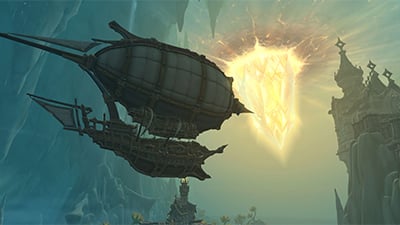

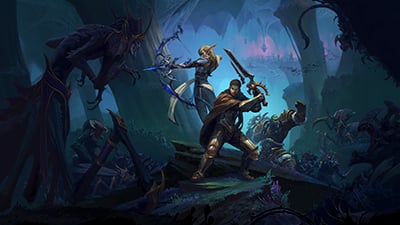
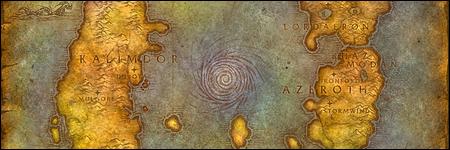
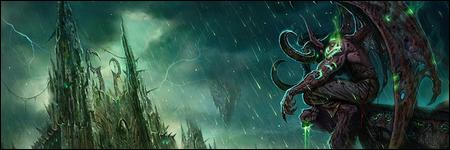
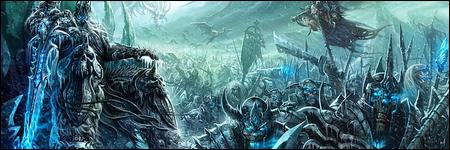
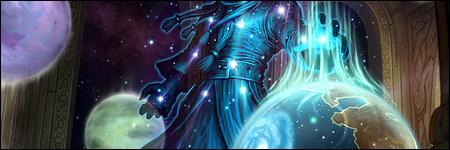
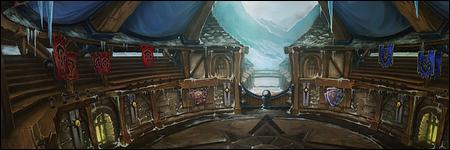
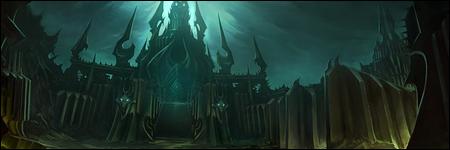


vBulletin Message